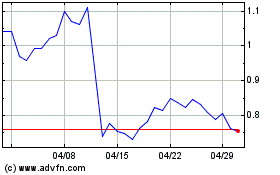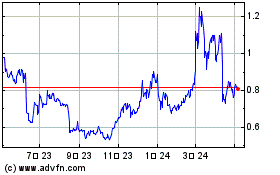Bitcoin On-Chain Transactions Reach New Heights, What’s Fueling the Surge?
2023年5月5日 - 8:30AM
NEWSBTC
The number of daily Bitcoin (BTC) transactions on the blockchain
has risen, reaching an all-time high of 682,000 on May 1st. Rafael
Schultze-Kraft, one of the founders of Glassnode, has suggested
that this increase in transaction volume is likely due to a
combination of factors. Related Reading: US Regional Bank
Failures Trigger Bitcoin Surge, $30,000 Level In Sight Bitcoin
Transactions Skyrocket Rafael argues that one key driver is the
growing adoption of Bitcoin by institutional investors and large
corporations. As more companies begin to hold Bitcoin on their
balance sheets and offer it as a payment option, the demand for
Bitcoin transactions has more potential to increase. Another factor
contributing to the rise in Bitcoin transactions is the growing
popularity of decentralized finance (DeFi) applications. These
applications, built on top of blockchains like Ethereum and
Bitcoin, allow users to borrow, lend, and trade cryptocurrencies in
a decentralized manner. Furthermore, Schultze-Kraft
notes that the recent surge in Bitcoin transactions could be a sign
of increased interest and activity in the cryptocurrency space more
broadly. As more people become aware of Bitcoin and other
cryptocurrencies. In addition, according to Schultze-Kraft, the
current surge in transaction counts is noteworthy because it is
more than double the baseline established in 2022, which had been
relatively stable at around 250,000 transactions per day, as seen
in the chart above. A notable increase in the use of Taproot
transactions has accompanied the recent surge. According to data
from Glassnode, Taproot transactions accounted for 37.5% of spent
outputs on April 30th, and on May 1st, a record-breaking 60% of all
Bitcoin transactions used Taproot. So, what is Taproot, and why is
its adoption increasing? Taproot is a proposed upgrade to the
Bitcoin network designed to improve privacy and efficiency. It
achieves this by combining multiple BTC script paths into a single
output that can be spent using a single signature. This makes
transactions smaller and cheaper, which can help to reduce
congestion on the network and lower fees. Taproot was first
proposed in 2018, but it has taken some time for the Bitcoin
community to reach a consensus on its implementation. However, with
the recent activation of Taproot looking increasingly likely, more
users and businesses are starting to adopt the technology.
Furthermore, the recent surge in Taproot transactions in the
Bitcoin network can be attributed to the heavy increase in text
inscriptions, according to Rafael Schultze-Kraft. More than 50% of
all transactions on the Bitcoin network have been associated with
text inscriptions. When separating transactions related to text
inscriptions from all other Bitcoin transactions, it becomes clear
that they are the sole driver for the recent increase in BTC
activity, surpassing the total number of all other transactions for
a brief time. The data from Glassnode shows that text inscriptions
are far more popular than others on the Bitcoin network, including
images, videos, and audio. While there are some uses for these
other types of inscriptions, such as embedding a digital signature
or proof of ownership, text inscriptions seem the most versatile
and widely used. As the Bitcoin network continues to evolve and
adapt to changing user needs, there will likely be more innovations
and upgrades that will further enhance its functionality and
usability. Whether through text inscriptions or other technologies,
it is clear that BTC is becoming more than just a financial
instrument but also a powerful tool for communication and
expression. Related Reading: SUI Gets A Bear Introduction On Day 2,
Will Sell Pressure Continue? Featured image from Unsplash, chart
from TradingView.com
EOS (COIN:EOSUSD)
過去 株価チャート
から 6 2024 まで 7 2024

EOS (COIN:EOSUSD)
過去 株価チャート
から 7 2023 まで 7 2024
